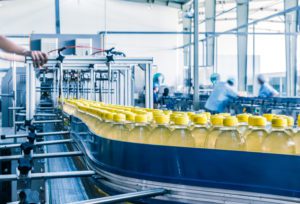How Will Connected Work Change in 2021? (Part I)
A version of this article was originally published in Forbes.
After a year like 2020, adapting to new realities and market conditions is something the manufacturing world knows how to do well. However, in 2021, the industry needs to focus on resilience and thriving, not just surviving.
While there are many industrial innovations that can and will support manufacturing plants in being efficient and profitable in the year to come, some of the more impactful ones will lead to actual physical changes in the plant environment.
Three of the most significant physical changes that I expect to start seeing across the manufacturing plant this year are the elimination of paper on the factory floor, the widespread use of handheld connected devices for work and accelerated reduction of energy use and physical, material waste in production processes.
Apart from impacting the physical plant environment, these changes will, more importantly, lead to improved agility on the plant floor, increase democratization of modern technologies and support business goals that go far beyond profitability.
Paper-based SOPs (Standard Operating Procedures) and Systems Will R.I.P
I predict 2021 will be the end of paper-based SOPs and processes in the industrial world. It’s been a broken system, but this year provided a wake-up call to those who were still using paper for training, record-keeping and task management. Companies will realize just how much it restricts agility.
When COVID-19 hit, worker safety became the top priority and companies needed to roll out new standard operating procedures rapidly, often across multiple sites at once. Digital – not paper – ensured workers adhered to these new procedures the first time and every time.
No longer can frontline workers and businesses waste time navigating paper systems when the work they are doing remains in flux. Long-term planning can only be a theory right now as things change quickly. The value, speed and utility of modern digital tools over paper provide an opportunity for both employees and companies to be more efficient and accelerate their output and production. With these tools, businesses can evolve and change quickly to respond to new market threats and trends.
In a year, I expect you’ll be hard-pressed to find six-inch binders in an industrial environment. And to that, I say, “rest in peace, paper.”
Democratization of Technology Will Be a Strategic Priority
There have been so many headlines during the last few years about robots, artificial intelligence and the factory of the future. But rather than jumping to “shiny” elements of digital transformation, we need to focus on what makes a difference now and today — and that is putting easy-to-use technology in the hands of all industrial frontline workers. The best “sensors” in manufacturing are not machines but frontline human workers.
The pandemic has shown just how disruptive it can be when frontline workers don’t have the tools and safeguards to do their jobs.
Despite all the things they could have done better, at the end of the day, robots didn’t save us; human workers did. Companies see that they need to invest in technology for all employees – not just those who sit behind desks or those managing at the top.
Industrial leaders must realize that hierarchy is harmful to progress, and access to technology must be flattened. Democratizing technology means making sure all workers are easily and quickly connected to the people, information, systems and machines to do their jobs as efficiently and safely as possible.
As a member of the World Economic Forum, my company is involved in the Great Reset initiative. I believe this global reset fundamentally involves providing modern digital tools for all workers, especially since it’s clear that there is no more “back to normal” from COVID-19. As digital continues to be a critical investment area, I predict no human worker to be left behind as the democratization of technology becomes a top strategic priority. Every worker will have access to powerful connected mobile devices, right in their hands.
Data-Driven Sustainability Strategies Will Create a New Competitive Advantage (and Create Less Waste)
As we look to 2021, factories will want to uncover new efficiencies to preserve profit margins during uncertain economic times. This includes more energy-efficient and sustainable operations, which require taking a hard look at their operational data.
Worker-focused technology benefits sustainability and the bottom line by capturing worker activity data and showing where there are roadblocks in operational processes. That knowledge can be used to adjust those SOPs, making them more efficient and creating less waste. For example: Something as simple as a properly executed gemba walk, that realizes the small act of turning off of lights should be included in a standard process, can add up and make a big difference in terms of energy conservation.
With material waste, data can uncover granular process issues or discrepancies that lead to an off-spec product. This curbs the amount of physical, material waste a process produces or outputs into the environment. By getting a more holistic picture of plant operations, including data on work execution, it’ll be easier for operations to become more efficient and sustainable.
In 2021, manufacturers will come to terms with critical pressing needs, like supporting their human frontline workers and striving for business resiliency as uncertainty continues. The shift to a more digital world, and digital work processes, will need to be central to every manufacturer’s business priorities this year.






